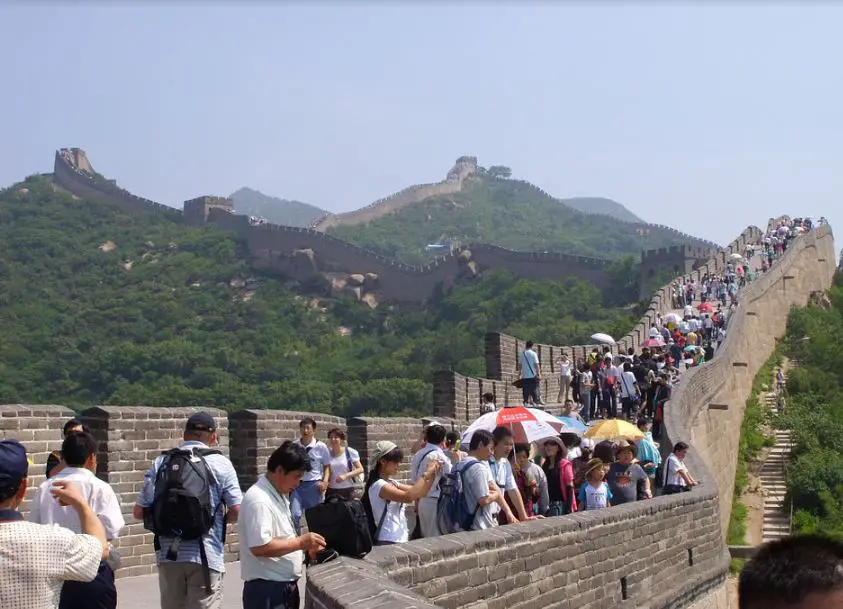Beijing, China: Interesting Facts,History, Things to do,Why to Visit
Post ByAdequate Travel
China, officially known as the People's Republic of China, is the most populous country in the world with a population of over 1.4 billion people. It is located in East Asia and borders 14 countries. China is known for its rich history, cultural heritage, and rapid economic growth.Under the leadership of the Chinese Communist Party, China has transitioned from being a predominantly agrarian society to becoming the world's second-largest economy. It has experienced significant development and urbanization, with cities like Beijing and Shanghai emerging as global economic centers.China is famous for its ancient landmarks such as the Great Wall of China, Terracotta Army, and the Forbidden City. Its diverse landscapes encompass vast plains, mountains, deserts, and rivers, including the Yangtze and Yellow Rivers.The Chinese government has implemented various policies to maintain social stability and control, including censorship and strict control over political dissent. It is also known for its strong emphasis on social harmony, collective identity, and Confucian values.Internationally, China plays a vital role in global trade and has become a major player in international politics. It is a permanent member of the United Nations Security Council and actively participates in regional organizations such as the Shanghai Cooperation Organization and the Asian Infrastructure Investment Bank.However, China also faces challenges, such as environmental degradation, income inequality, and human rights concerns. The country is working towards addressing these issues while continuing its economic growth and modernization efforts.Uncover the best china attractions that will leave you awe-inspired and wanting more.
Interesting facts
Population
China is the world's most populous country, with a population of over 1.4 billion people.
Examples:
- China's population is more than four times that of the United States.
- It is estimated that one out of every five people in the world is Chinese.
Great Wall of China
The Great Wall of China is a UNESCO World Heritage site and one of the seven wonders of the world. It stretches over 13,000 miles and was built to protect China from invasions.
Examples:
- The Great Wall of China is the longest man-made structure in the world.
- It took over 2,000 years to build the wall, with construction starting as early as the 7th century BC.
Chinese Cuisine
Chinese cuisine is renowned and loved all around the world. It is diverse, with regional variations and a wide range of flavors and ingredients.
Examples:
- Some popular Chinese dishes include Kung Pao chicken, Peking duck, and dim sum.
- Chinese cuisine heavily emphasizes the balance of flavors and textures.
History and Civilization
China has a rich history that dates back thousands of years. It is one of the world's oldest continuous civilizations.
Examples:
- The Xia Dynasty, the first recorded dynasty in Chinese history, dates back to the 21st century BC.
- Ancient China is known for inventions such as paper, gunpowder, and the compass.
Economic Powerhouse
China has become a global economic powerhouse. It is the world's second-largest economy and plays a major role in international trade and manufacturing.
Examples:
- China is the world's largest exporter of goods.
- It is home to many successful multinational companies, such as Alibaba, Huawei, and Tencent.
Overview
China, officially known as the People's Republic of China, is a country located in East Asia. It has a long and rich history that spans over thousands of years. With its vast territory and large population, China has played a significant role in shaping world history and culture.
Ancient China
Ancient China refers to the period before the Qin Dynasty (221-206 BC). During this time, China saw the rise and fall of various dynasties, each leaving behind a unique cultural and historical legacy. Important developments include the invention of paper, the establishment of the Great Wall of China, and the development of Confucianism and Taoism.
Imperial China
The Imperial China period started with the Qin Dynasty and lasted until the overthrow of the Qing Dynasty in 1912. It was characterized by a centralized imperial government and rigid hierarchical social structure. The Han Dynasty (206 BC - 220 AD) was one of the most influential dynasties during this era, known for its advancements in arts, sciences, and governance.
Medieval China
The Medieval China era, also known as the "Three Kingdoms" period, occurred between the 3rd and 9th centuries. It was marked by political fragmentation, power struggles, and invasions from neighboring tribes and empires. The Tang Dynasty (618-907) emerged as a prosperous and culturally vibrant era during this time.
Modern China
In the late 19th and early 20th centuries, China underwent significant changes due to internal and external pressures. The Opium Wars, the Taiping Rebellion, and the Boxer Rebellion all contributed to the decline of the Qing Dynasty and the establishment of the Republic of China in 1912. After a period of instability and civil wars, the Communist Party of China gained control and established the People's Republic of China in 1949 under the leadership of Mao Zedong.
Examples of China's Historical Influence
1. Great Wall of China: Built to protect against invasions, it stands as a symbol of China's ancient civilization and military prowess.
2. Silk Road: China's trade route to the West played a vital role in connecting different civilizations and spreading cultural exchange.
3. Chinese philosophy and religions: Confucianism, Taoism, and Buddhism originated in China and have had a profound impact on the country's culture and worldview.
4. Terracotta Army: Discovered in the tomb of Emperor Qin Shi Huang, it showcases the incredible craftsmanship and military power of ancient China.
5. Chinese inventions: Many significant inventions, such as paper, gunpowder, compass, and printing, originated from China and greatly influenced the world.
Exploring the rich heritage of historical sites in china is a journey through time and culture.















